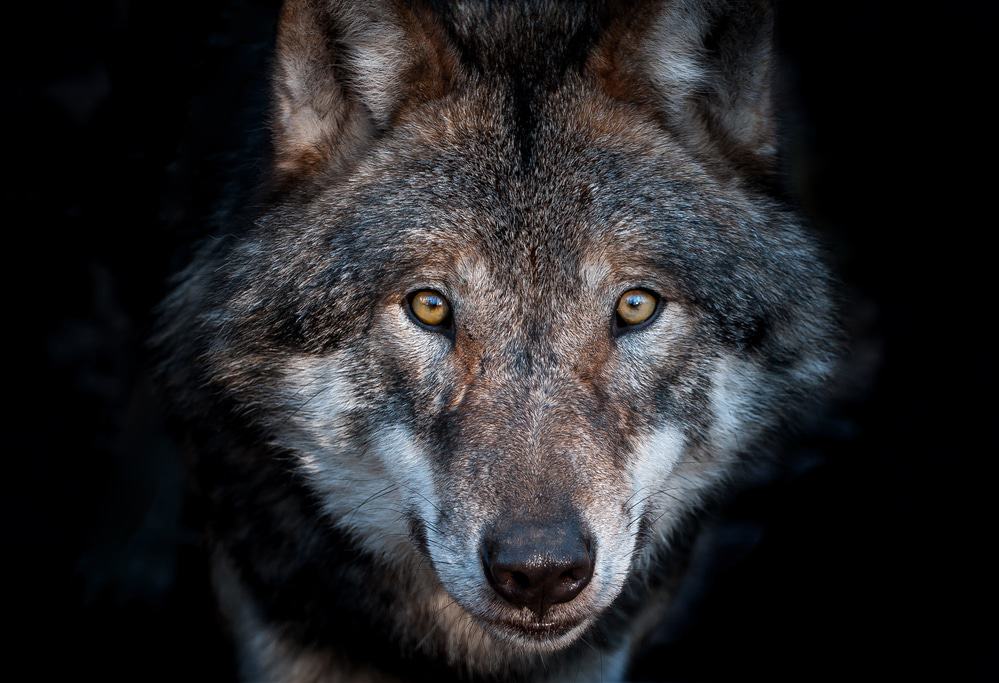Our expert-vetted content is grounded in current scientific publications, yet we acknowledge science’s ever-evolving nature. Read our full editorial and disclosure policy.
Introduction
The origin of “man’s best friend” (the domestic dog) is a contentious topic in science. Where and when the domestic dog (“man’s best friend”) came into being is controversial in science.
It can be hard to imagine that the modern-day pug, chihuahua, labrador, and all other dogs we see today in all shapes and sizes all link back to one common ancestor: the wolf.
Watch the whole story about the origin of dogs in our expert interview here:
Read the entire article or jump to any section below.
Key Points of the Origin of Dogs
- The mystery of when and where the domestication of the modern dog is still a contentious topic.
- All domestic dogs trace back to a common ancestor, the wolf.
- The geographic origin varies depending on the study and timeline, but the general trend is Eurasia and Europe.
- There are two theories on how domestication occurred; ‘The Scavenger Hypothesis’ and ‘The Proactive Domestication Hypothesis’.
- Domestication favored more docile wolves resulting in a ‘proto-dog’, characterized by physical and behavioral changes more closely associated with the modern dog.
- Selective breeding became formalized dog breeds in the 19th century.
- The modern-day dog breeds most closely linked to their wolf ancestor are the Siberian Husky, Alaskan Husky, Alaskan Malamute, and the Basenji.
The Origin
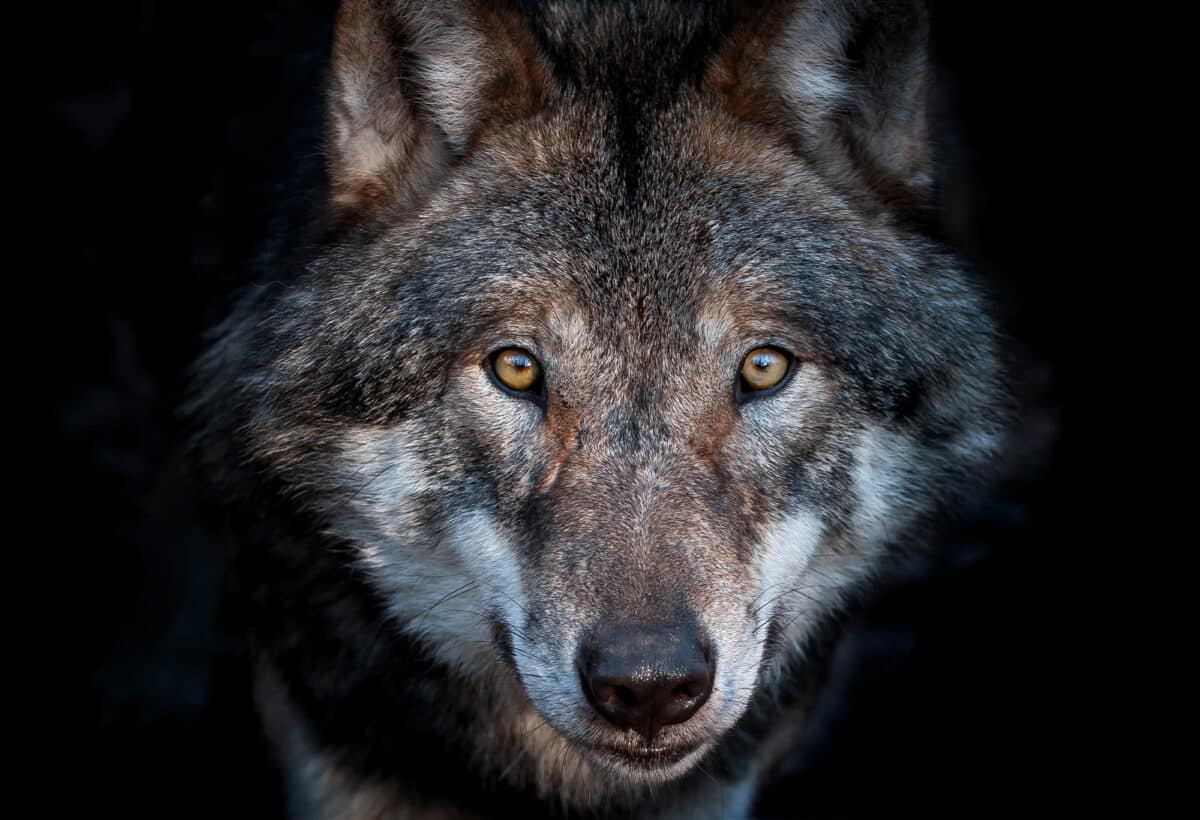
Let’s dive into The Origin of Dogs: How Dogs Became Our Best Friends, where do they actually come from?
The ancestor of the domestic dog
The domestication process did not occur overnight and is thought to have spanned over the last 10,000 to 40,000 years. It is believed that an extinct ‘Late Pleistocene Wolf’ could be the ancestor of the dogs we know today. Later studies have revealed that the Grey Wolf (also spelled Gray Wolf) is the closest living relative of the modern-day domestic dog.
Where dogs’ ancestors came from
The geographic location of the origin of dogs differs depending on which theory of how long ago domestication of the dog occurred. For example, one study suggests that diversification of genetics from wolf to dog occurred 26,000 to 19,000 in Siberia, where the dogs then later dispersed to the Americas and Eurasia. A second study identified the remains of a dog dating back 20,000 years. The general trend suggests that the modern dog’s origin is Eurasia, the Middle East, Europe, or South China.
Two theories of domestication
Using the upper limiting time span of genetic divergence from wolf to dog, it was around 40,000 years ago that the canids (mammals of the dog family) began their journey toward domestication. These mammals were not the modern-day dog we know today or a wolf but a transitional species named the ‘proto-dog’. This timing of the emergence of the proto-dog coincides with an icy and dry climate known as the Upper Paleolithic Period, or Ice Age, which occurred 40,000 to 10,000 years ago. A time when humans transitioned from a nomadic lifestyle to settling in communities. In these communities, food waste was left out of meals, attracting opportunistic wolves. Thus there are two theories of how and why these species came into being; firstly, ‘the scavenger hypothesis’ and secondly, ‘ the proactive domestication hypothesis’. Both theories have substantial evidence, but neither has proven to be definitive.
The Scavenger Hypothesis
The Scavenger hypothesis proposes that wolves started following human hunting groups attracted by leftover food or hunted meat. They may have also hung around human settlements for the same reason. Over time these wolves became less fearful of humans and began to tolerate their presence. The wolves adapted to the selective advantage of accessing more food resources without expending too much of their energy hunting. Over generations, these wolves diverged from their ‘wilder’ counterparts to become the proto-dog and enter a mutualistic relationship with humans.
The Proactive Domestication Hypothesis
The Proactive Domestication hypothesis proposes humans took an active role in the process. This theory suggests that humans saw the potential of having wolves around as partners in hunting, protection, and companionship. Some wolves were captured and tamed, and the docile and trainable ones were favored. These wolves were selected, and favored genes were passed on to future generations.
Trait Transitions: from wolf to dog
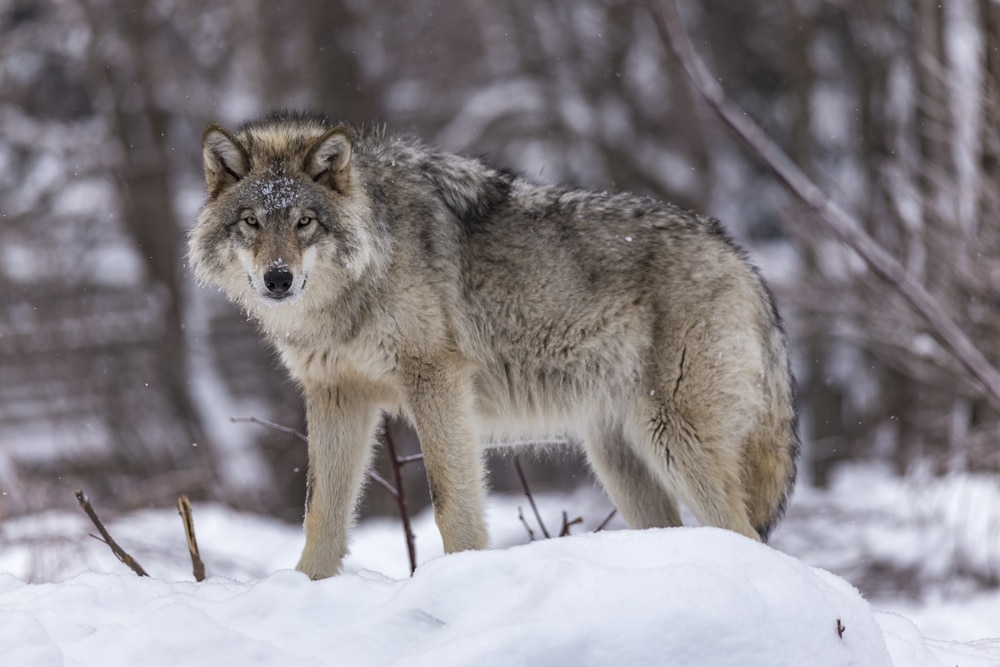
Either of the two above domestication processes resulted in wolves that were more docile and tolerant of humans being favored. This meant that specific traits and genes were either knowingly or unknowingly selected. Thus began the start of the transition to the proto-dog. The wolves became smaller, their snouts shortened, and their teeth became more similar to those seen in the modern dog. These changes occurred as the proto-dog no longer needed their ‘wolf-like’ characteristics to hunt and survive in the wild.
Not only did the wolves’ physical traits change, but their behavior also transitioned to a more docile and less aggressive animal compared to their wolf ancestors. Wolves that showed the ability to communicate and be trained were also favored. Evidence of the early domestic dog is around 14,000 years ago, but the genetic divergence between dog and wolf occurred much earlier.
Selective breeding: how did we get from wolf to “pug”?
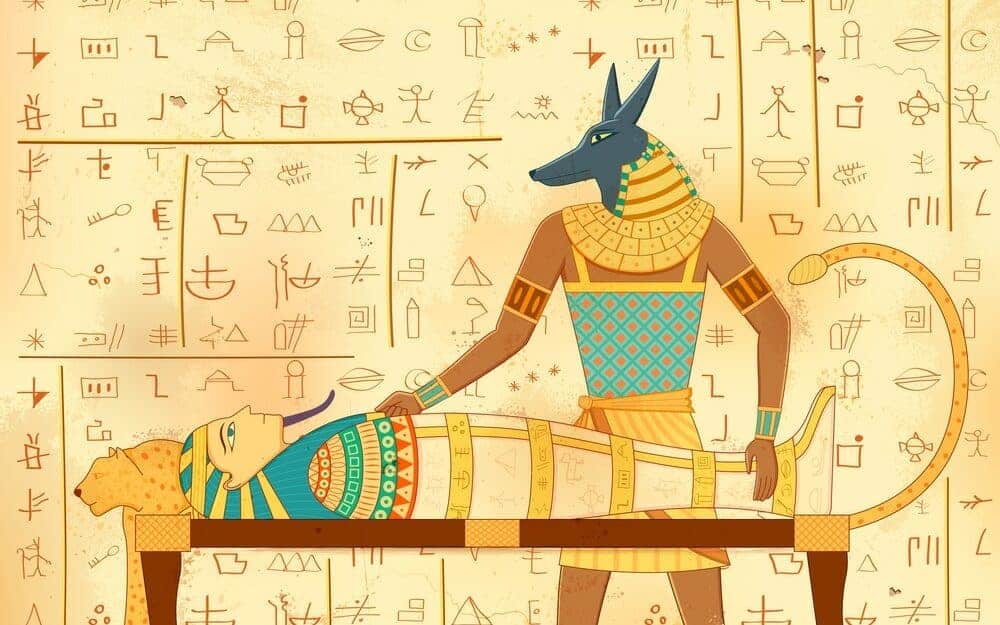
As humans began to recognize the benefits of the proto-dogs, they started selectively breeding with ones who had traits they preferred. This included practical purposes such as those with good hunting, herding, or guarding abilities, to name a few. As this selective breeding continued over generations, human societies would not only select dogs for the specific roles they could play in their community but also for preferred aesthetic looks. By the time of the Ancient Egyptians, about 4000 years ago, dogs were a well-established important domestic animal with evidence in their art of different breeds. These dogs were often buried with their owner as the owner wanted to take them to the afterlife.
Selective breeding is a powerful selection method for favored behavioral and physical traits. As noted above, this transition from wolf to domestic dog occurred over time. By the 19th century, the formalized breeding of dogs boomed. Dogs were bred for either work-related traits or aesthetics, or both, leading to the creation of hundreds of unique dog breeds. For example, looking at a French bulldog and a husky, it is hard to imagine that these dogs come from the same common ancestor. Today there are about 450 known different breeds of dogs.

Breeds most ‘closely’ linked to their ancestor (wolf)
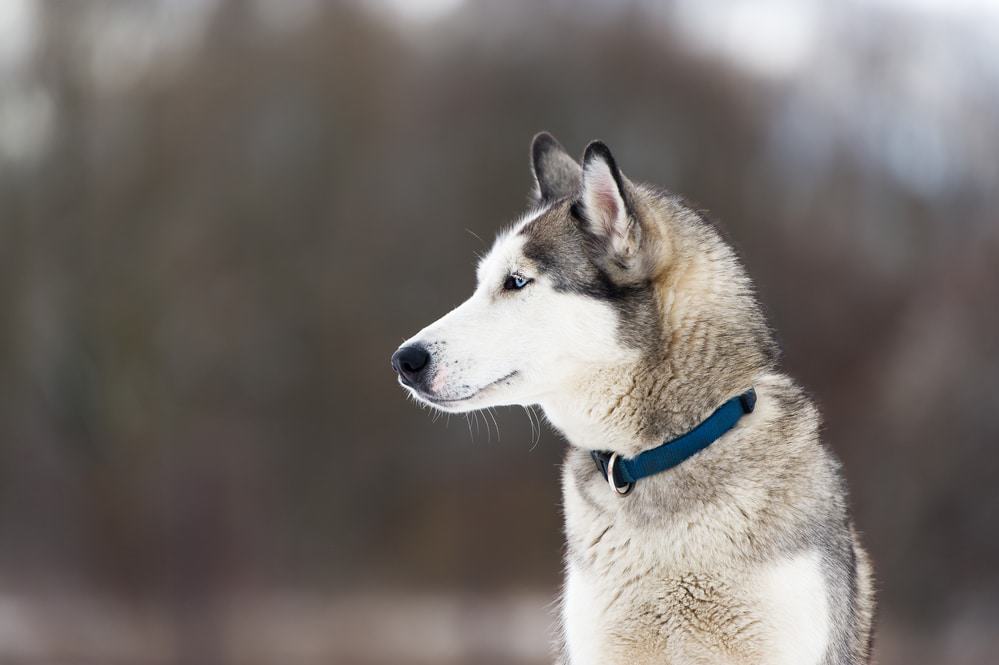
Genomic studies have identified that the modern-day dog breeds most closely related to their ancestor (wolf) are the Siberian Husky, Alaskan Husky, Alaskan Malamute, and the Basenji.
Comparison of domestic dog to the modern-day wolf
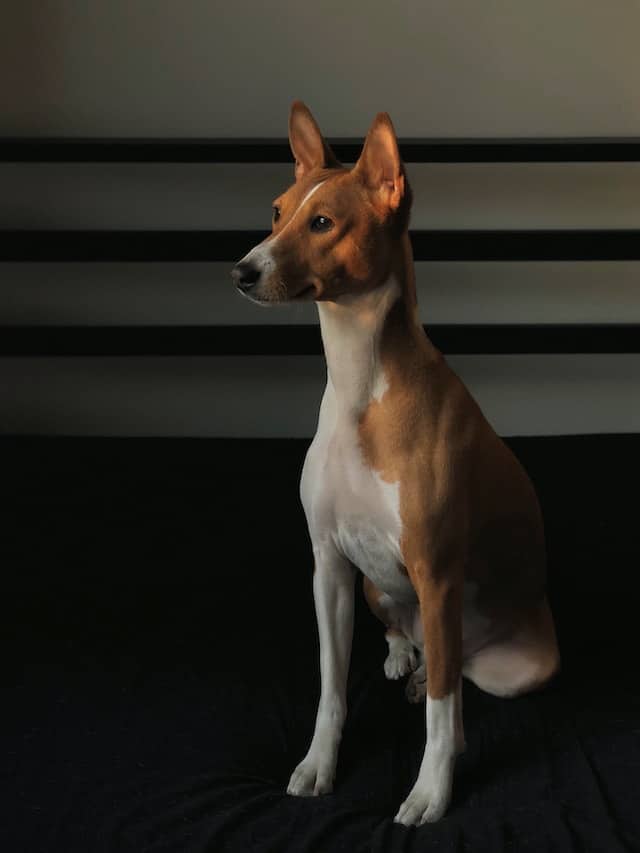
| Domestic Dog | Modern Wolf | |
|---|---|---|
| Size | Varies significantly based on breed, from tiny 2 lbs (900g) to large 200 lbs (90kg) | Generally large, on average, up to 60-170 lbs (30-80kg) for grey wolves. |
| Behavior | Trainable, generally friendly, diverse behavior patterns depending on breed and upbringing. | Predominantly wild, highly territorial, and mostly live in packs |
| Diet | Omnivorous, typically fed a diet of commercial dog food. Some can tolerate various foods, while others are more sensitive to diet. | Carnivorous, they primarily hunt prey in the wild (large hoofed animals such as deer). |
| Physical characteristics | Range of characteristics due to selective breeding, generally smaller teeth than the wolf and varying snout lengths. | Larger teeth and stronger jaws than the domestic dog. As well as longer snouts and more robust bodies. |
| Lifespan | Generally, 8-15 years can vary widely by breed. Some small species live up to 20 years. Whereas some larger breeds are considered old by the time they are 8. | Typically 6-8 years in the wild, up to 15-20 years in captivity |
Wrapping it up the Origin of Dogs

To wrap it up, despite the ongoing research to pin the exact lineage and origin of the domestic dog. We can conclude that its ancestor was a type of wolf (Late Pleistocene Wolf), with its closest living relative being the Grey Wolf. Over years of early domestication, the proto-dog became more docile and human-friendly, entering into a mutually beneficial relationship with human settlers.
Humans then selectively bred these proto-dogs to become domestic dogs used for various reasons. In the 19th century, formal breeders and breed clubs were developed, where characteristics and traits became grouped.
Frequently Asked Questions
A domestic dog, scientifically known as Canis lupus familiaris, is a domesticated form of the wolf.
The domestic dog belongs to the Canis genus, a subset of wolf-like canids, and is the most prevalent terrestrial carnivore. Dogs have been bred by humans for thousands of years for various purposes such as herding, hunting, protection, and companionship.
The “best” house dog can vary greatly depending on a person’s lifestyle, living situation, and personal preferences. However, some breeds often recommended for living in a house or apartment include the French Bulldog, Cavalier King Charles Spaniel, Bichon Frise, Shih Tzu, and the Pug. These breeds are generally known for their adaptable nature, smaller size, and lower energy levels than others. However, it’s important to remember that individual dogs within a breed can have different personalities and a dog’s upbringing and training also play a significant role in their behavior.
The term “nicest” can be subjective and depends on what one values in a dog. If by “nicest” you mean friendly and good-natured, breeds often noted for these characteristics include the Labrador Retriever, Golden Retriever, Beagle, Boxer, and Cavalier King Charles Spaniel. These breeds are often recommended for families because they are sociable and gentle. However, individual dogs’ personalities can vary, and many factors, including socialization and training, can influence a dog’s behavior.
Adult dogs typically have 42 teeth. However, the Red Fox, which is a dog-like animal, has 40 teeth. It’s important to note that the number of teeth can sometimes vary slightly among individual animals.
Thank you for reading the article about the origin of dogs! If you enjoyed reading this, you might want to keep learning more about man’s best friend! Click on one of the links below to learn more about our fury friends and the origins of other domesticated animals.
- Siberian Huskies 101
- Wolf-Like Dogs
- How Hunting Dogs Can Help You Start Your Journey As A Hunter
- 10 Best Dog Breeds for Beginners
- Top 10 Ugly Dogs
- The Origin of Horses
- The Origin of Cats
- Looking After Your Pets on Guy Fawkes – 5 November
- Heartwarming Story: Mountain Lion Cub Released Back Into The Wild After Being Hit By A Car In California - October 9, 2024
- What Can Dogs Eat – A Complete Dogs Dietary Guide - October 2, 2024
- The Origin of Horses Dates Back 50 Million Years Ago - October 2, 2024

